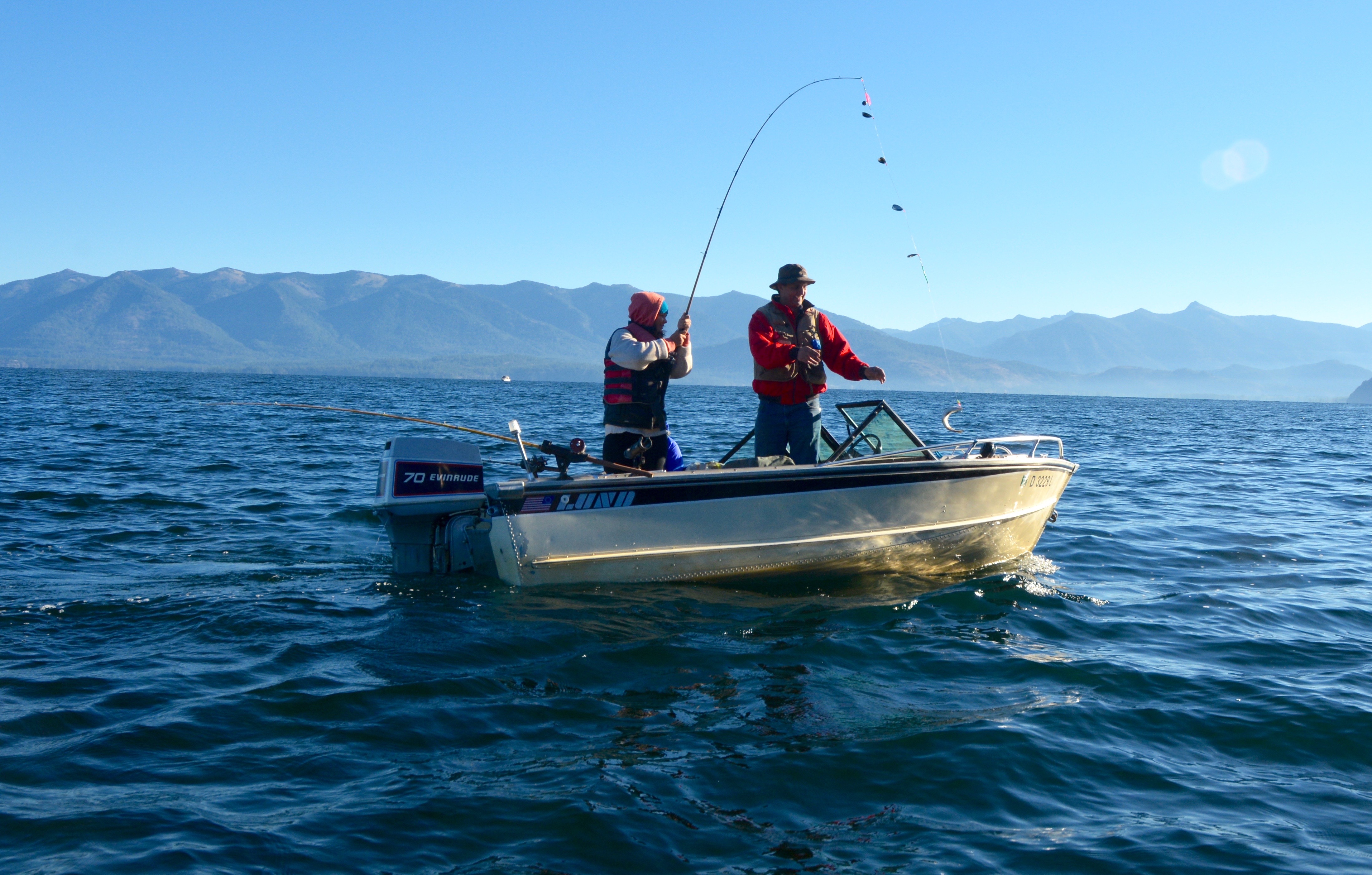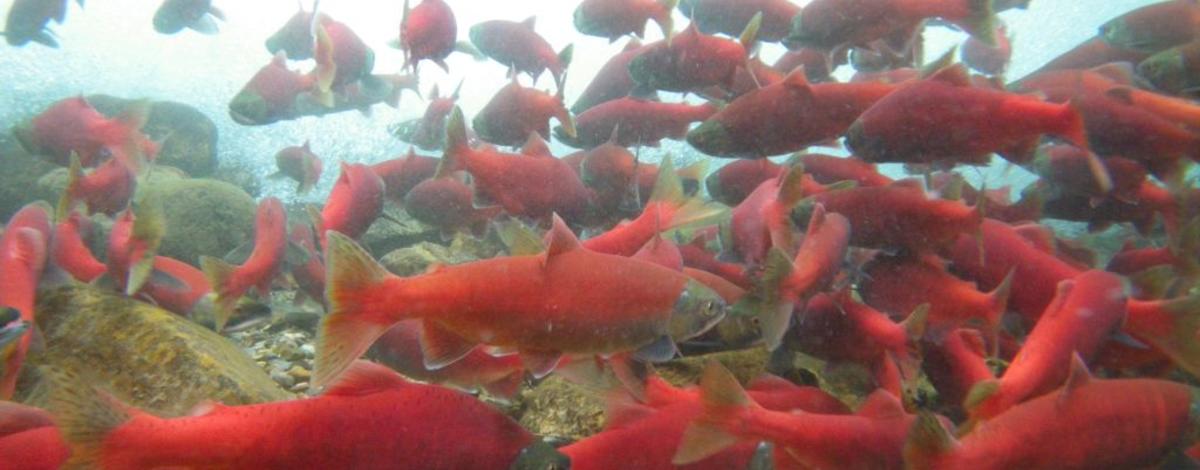Kokanee salmon are landlocked sockeye and popular fish for Idaho anglers, but save for a few rare lakes, they didn’t historically exist in most Idaho waters. So how did they get there, and how do they consistently produce tens of thousands of fun-to-catch and tasty fish for anglers?
The short answer is Fish and Game biologists and hatchery crews team up to maintain this popular fishery throughout the state through an annual stocking program that is sometimes supplemented by natural production.
Kokanee are not native to Deadwood Reservoir, but were introduced in 1945. Kokanee flourished in the reservoir’s cold water and spawned in its tributaries, and they are now the backbone of Fish and Game’s early-run hatchery kokanee program that fuels kokanee fisheries across the state.
Kokanee eggs are taken in late summer and transported to hatcheries, such as Cabinet Gorge Hatchery in the Panhandle and later to Mackey Hatchery in East/Central Idaho, where the eggs are hatched and young fish raised to later be stocked as fingerlings throughout Idaho.

Collecting kokanee eggs from a remote mountain reservoir and rearing them in hatcheries is only part of the challenge in providing good kokanee fishing. Biologists must determine how many young fish are ideal for each body of water because each has a limited food supply for the young fish to grow.
Stocking too many fingerlings might mean there will be abundant fish, but smaller than what anglers seek. Too few and it may produce some large kokanee, but in too few numbers to produce the good catch rates that anglers expect.
Adding to that challenge are fluctuating environmental conditions, predator abundance, and multiple year classes of fish in the water at the same time. Fish managers face a combination of a balancing and juggling act with a little luck-of-the-draw thrown into the mix.
When it all comes together, anglers have great catch rates and good-sized fish, which happens fairly regularly and makes kokanee fishing very popular throughout Idaho.

When it doesn’t come together in some waters, there can be population crashes, less abundant fish, or small fish, which can result in changes in stocking numbers to account for changing conditions.
But in good years and bad, Fish and Game biologists and hatchery staffs are monitoring kokanee populations, spawning and rearing young fish, and getting ready to stock the next generation of kokanee into Idaho’s lakes and reservoirs so anglers can enjoy the bounty they provide.
The number of reservoirs and lakes vary from year to year, but these waters are consistently stocked during most years.
- Bonner Lake
- Hayden Lake
- Lower Twin Lake
- Soldiers Meadow Reservoir
- Arrowrock Reservoir
- Deadwood Reservoir
- Lucky Peak Reservoir
- Warm Lake
- Anderson Ranch Reservoir
- Devils Creek Reservoir
- Montpelier Reservoir
- Wellness Reservoir
- Island Park Reservoir
- Ririe Reservoir
- Mosquito Flat Reservoir
- Payette Lake
- Upper Payette Lake
- Horsethief Reservoir
- Lake Cascade
- Montpelier Reservoir
- Blackfoot Reservoir
In addition to these hatchery supported fisheries, Idaho has other popular kokanee fisheries, such as Lake Pend Oreille, Coeur d’Alene Lake and Dworshak Reservoir. To learn more about other waters with kokanee, and more about fishing in Idaho, check out the Fishing Planner.

